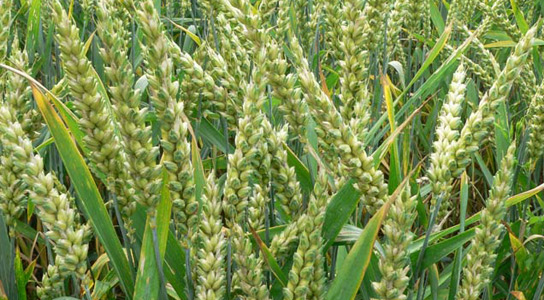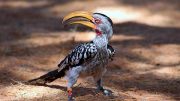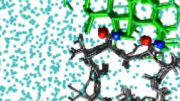
A preliminary sequence of the bread wheat genome could help breeding efforts. Credit: H. F. Schwartz/Colorado State University
An international team has produced a rough draft of wheat’s DNA sequence. The draft identifies many of its genes and makes it possible to identify thousands of potential genetic changes that could improve this crop. It’s been long considered one of the most important crop genomes.
The scientists published their findings in the journal Nature. This could yield tremendous opportunities to improve the crop. Wheat is the world’s most widely grown crop and feeds a substantial part of the population. Yet scientists have struggled with its complex genetics as there are two kinds of wheat, bread wheat (Triticum aestivum) and pasta wheat (durum), which have different DNA sequences. Pasta wheat is a hybrid of two wild grasses and has two genomes, one from each of its ancestors.
Bread wheat has three genomes. It is the result of the hybridization of the pasta wheat with a third grass species. This study focuses on the bread wheat genome, which has six times as much DNA as the human genome. Bread wheat passes each of its three genomes to the next generation. This is unlike corn, which melded two ancestral genomes into one. The biggest problem has been trying to work out which gene comes from which genome.
The scientists had to sequence millions of DNA fragments from one variety of bread wheat. Then, they pieced together just the fragments containing genes. The genomes of the two ancestors of wheat were also sequenced and used to assign to two-thirds of the 95,000 genes that were found to each of the three genomes. Genes were grouped together based upon their similarity. The classes expanded in some cases because of hybridization, while in others, they shrank. As a result, bread wheat has more storage, defense response and energy metabolism proteins than its ancestors.
Other bread wheat varieties were also sequenced in order to pinpoint the differences in their genes. These differences could represent potential improved traits, like drought resistance, which could be bred into new lines of wheat.
The genome isn’t complete, but it’s the beginning of a useful analysis since nearly all of the features can be seen. Now, geneticists will have to understand their connectedness.
Reference: “Analysis of the bread wheat genome using whole-genome shotgun sequencing” by Rachel Brenchley, Manuel Spannagl, Matthias Pfeifer, Gary L. A. Barker, Rosalinda D’Amore, Alexandra M. Allen, Neil McKenzie, Melissa Kramer, Arnaud Kerhornou, Dan Bolser, Suzanne Kay, Darren Waite, Martin Trick, Ian Bancroft, Yong Gu, Naxin Huo, Ming-Cheng Luo, Sunish Sehgal, Bikram Gill, Sharyar Kianian, Olin Anderson, Paul Kersey, Jan Dvorak, W. Richard McCombie, Anthony Hall, Klaus F. X. Mayer, Keith J. Edwards, Michael W. Bevan and Neil Hall, 28 November 2012, Nature.
DOI: 10.1038/nature11650









Be the first to comment on "Inherent Complexity of the Wheat Genome"